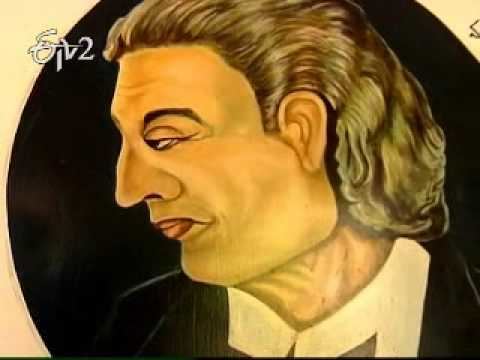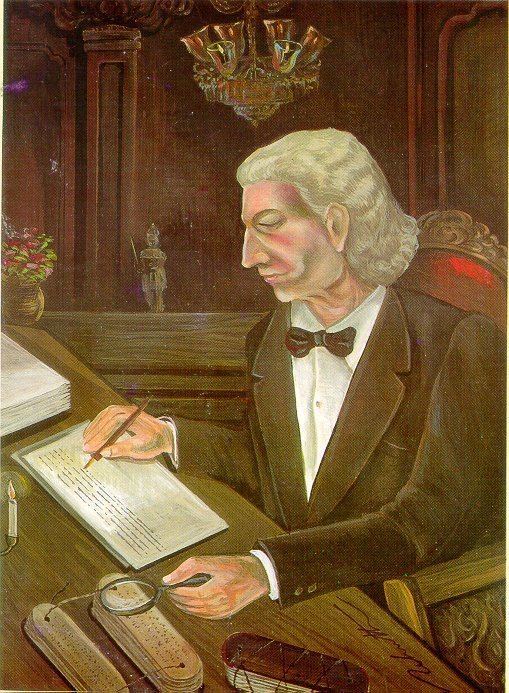Occupation Civil servant Name Charles Brown Nationality British Role Writer | Ethnicity Christian Education Indian Civil Service Notable works Telugu dictionary | |
 | ||
Literary movement Collection of Telugu books Died December 12, 1884, London, United Kingdom Books English-Telugu Dictionary, A Telugu-English dictionary | ||
A tribute to sir charles phillip brown
Charles Philip Brown (10 November 1798 – 12 December 1884) was a Telugu writer and an Englishman by descent. He worked as an official in Cuddapah and Rajahmundry during the British rule in India.
Contents
- A tribute to sir charles phillip brown
- Biography
- Literary service
- Other publishings
- Style
- Death
- Awards and titles
- References

Telugu literature was in a dormant phase and declined in 18th century because of various social and political reasons, including lack of creative Telugu poets, prevailing illiteracy and decline of empires, like Vijayanagara Empire, who were patrons of the literature. Brown being an official in the region collected the works, printed them and he believed he saved the heritage of the Telugu language. In his own words, "Telugu literature was dying out; the flame was flickering in the socket in 1825, I found Telugu literature dead. In 30 years I raised it to life".
Janamaddi Hanumth Sastri who has done an extensive research on Brown established a library in Kadapa in his memorial.
Biography
Charles Brown was born in Calcutta on 10 November 1798. His father David Brown was a manager of an orphanage and a missionary and scholar in many languages including Sanskrit. Charles Brown moved back to England in 1812 after his father's death and returned to Madras on 4 August 1817 to obtain training from Haileybury College for a civil service job in India.
In 1820, Sir Thomas Monroe, governor of Madras had ordered that every official should learn a local language. As part of the curriculum he had to learn a local language and he chose Telugu language under the guidance of Velagapudi Kodandarama Panthulu. Charles Brown passed Telugu exam as well as the civil service exam in 1820. He joined as a deputy to Mr. Hunbury, the collector of Cuddapah. He was inspired by Hunbury's fluency in Telugu and improved his Telugu more. He was transferred to Machilipatnam in 1824 and then to Rajahmundry in 1825. His administrator services at the time of the Great Guntur famine(1832–1833) were highly appreciated.
He was relieved from his duties in 1834. He went back to London and stayed there from 1835 to 1838. Brown returned to Madras again in 1837 as a translator of Persian for the East India Company and joined as a member of the Madras College Board. He retired in 1854 because of health reasons and went back to London again. He worked as a Telugu Professor at the London University for some more time before his death on 12 December 1884 in London.
Although he patronised Telugu he was a polyglot. Some of the other languages he knew were: Greek, Latin, Persian, Sanskrit.
Literary service
Charles Brown established two schools in Cuddapah and two more schools in Machilipattanam. The schools provided free food to students and free education which included Telugu. He did three great services for Telugu: he produced his own works, he recovered and discovered old works and he printed books in Telugu.
His interests turned to Vemana's literature in 1824. He studied Vemana's works and other Telugu literature. He also studied Telugu meter and grammar under the guidance of Venkatasivasastri Tippabhatla and Advaitabrahmasastri Vatthyam. Charles Brown was transferred to Rajahmundry in 1825. He continued his study of Telugu literature. He collected the written scripts of Telugu Kavyas (poems) that were on the verge of extinction. He hired some copyists/writers (raayasagaallu) to prepare fresh copies. He reprinted Andhra Mahabharatamu and Andhra Mahabhagavatamu.
He also wrote several grammar and prosody books and learning materials for English people who were interested in learning Telugu. He created Telugu-English dictionaries. He authored chronicles and monographs in literary journals. He translated many poetical works. Madras Oriental Library still hosts many works of C. P. Brown.
He also collected essays, stories, poems etc. that have no written copies, but were popular among folks. Since 1824, he started collecting old books of Tikkana and Potana and poems of Vemana. During his stay in London around 1835–38, he collected 2,106 hand written books in South Indian Languages from the India House Library and sent them back to India ( to Chennai Library).
He edited and published several Telugu and Sanskrit books. He also hired writers and created fresh copies of the old books.Brown was also an editor of the Madras Journal of Literature and Science. He also wrote articles about the stories of the manuscripts he collected in The Asiatic Journal in London.
Charles Brown spent his own money for the development of Telugu and even took loans for the same. He saved every penny for the development of Telugu. Even in tough financial times he didn't give up his Telugu development programs. He retired in 1854 and settled in London. He worked at London University as Telugu Professor for some time.
Other publishings
He had prepared commentaries for all of the published works so that non-scholars can understand them. Some of the publishings sponsored by him are:
He also left many press ready copies like Basavapurana, PanDitaaraadhya Charitra, Ranganaatha Ramayanam, 'Uttara Raamaayanam, Vijaya Vilasam, Sarangadhara Charitra, Hari Vamsam, Kasi Khandam, Aniruddha Charitra, Kuchelopakhyaanam, Radhika Santvanam, Vikramaarka charitra etc. They were published by different institutions in Tamil Nadu and Andhra Pradesh after his death.
He also collected poems of Sumathi Satakam and Andhra Pradesh Sahitya Academy published it in 1973 acknowledging him. This is similar to Vemana Satakam that Brown published.
Style
He collected the stories and poems of common people and published them first. Though he was less interested in pedantic works, he also published many major Telugu works along with translations written by him or other copiers closely monitored by him. He prepared an index, a glossary and commentaries to all the works. Brown mentioned that the purpose of the commentary was to make the poems to be understood clearly without oral instructions. He also included many spoken words in his dictionary.
There is no concrete evidence that Brown introduced any more than Sandhi breaks for the Telugu alphabet. The 1906 Linguistics Survey of India does not credit Brown for change in alphabets or making it easy for pronunciation.
Death
He died in 1884 on 12 December at the age of eighty-seven. He is buried in Kensal Green Cemetery (The General Cemetery of All Souls) in London.
